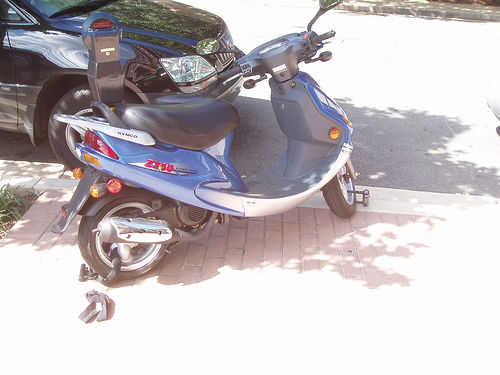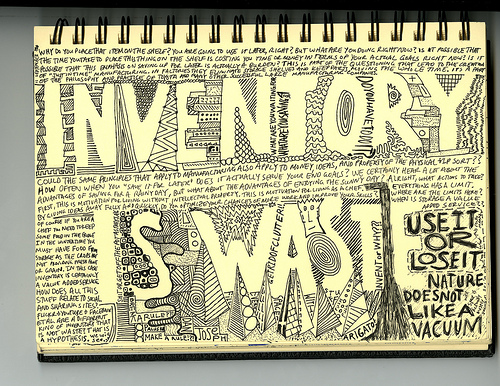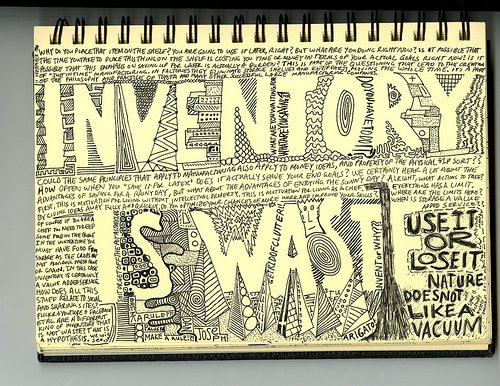This article originally appeared on the SnapGoods blog.
Our math was wrong.
As I once talked about in front of a crowd of smart New York tech and design folks, humans keep reproducing. There are more people every day (What up, 7 Billi??) and those people (that’d be you and me and us) produce more waste, manufacture and consume more durables, and more rapidly diminish our dwindling resources. But you already knew that.
In fact, here at SnapGoods HQ, we’ve been tackling this challenge in a specific way. We’ve been making it easy and safe for people to rent the things they need from people nearby. You’ve got a scooter and aren’t using it; I need to run errands for the day, and I’d happily pay $50 for a scooter to speed things up. You make money, I make my life easier and a little bit funner. (Yup, funner.) SnapGoods keeps everything safe. But you already knew that, too.

Running errands on a scooter = fun. Photo credit: Nick V. Used under Creative Commons license.
At first glance it sounds like what we’ve built is a way to manage, track, and transact around inventory. In fact, it sounds like that should be our focus. That’s what we, like many of the other services in the P2P, collaborative consumption, access economy space thought when we started. Meh.
PLOT SPOILER: A focus on static supply (“inventory”) or demand is incomplete and pretty close to incorrect. We have to be more than the sum total of growing “inventory.” (More on the air quotes in a second.) We have to be more than matching and listing. It turns out the entire fate of the Access Economy rests on re-arranging the variables into the right equation.
If a system focuses solely on inventory, it optimizes for ’1+1 = 2′ math. However, when it prioritizes people, it changes the math. In actuality, 1+1 should equal 2,000 or more. This is the promise of people and the calculus of collaboration.
In order for Collaborative Consumption to become a standard consumer option, systems like SnapGoods have to build around the true wealth of the system — not the supply (“inventory”) or demand, but rather the people and the networks those people bring. Is Jim’s scooter as valuable to the SnapGoods community as Jim and his knowledge of where to find a scooter and what to do with it? Hint: People beat stuff every time … plus people are better for conversation. And beers.

The idea that inventory is waste is not a new theme. Photo credit: Inha Leex Hale. Used under Creative Commons license.
Here are three big things worth re-thinking that we’ll explore: Inventory, Networks, People.
- Inventory – “Inventory” isn’t real in a peer-2-peer system. (…in the way it would be for hotel rooms or rental cars. That explains the air quotes.)
- Network – There is no such thing as network effect for inventory. (i.e. linear growth for inventory, not exponential)
- People – It’s always about people. Their lives, their passions, their data, their behavior, their problems, their solutions.
Boom. I just amazed your mind. Do NOT miss the next installment.
###
Related articles on the SnapGoods blog:
Invest in We
Are You a Connector?









